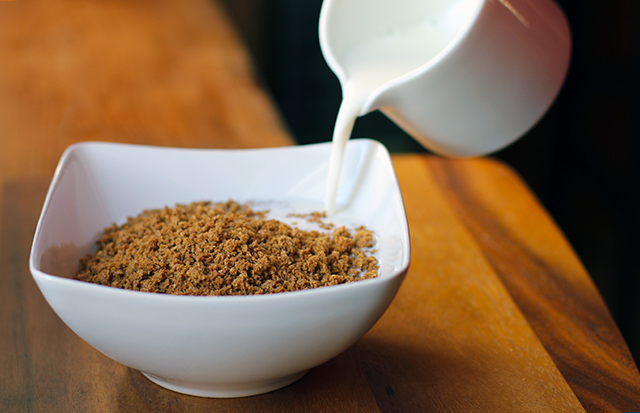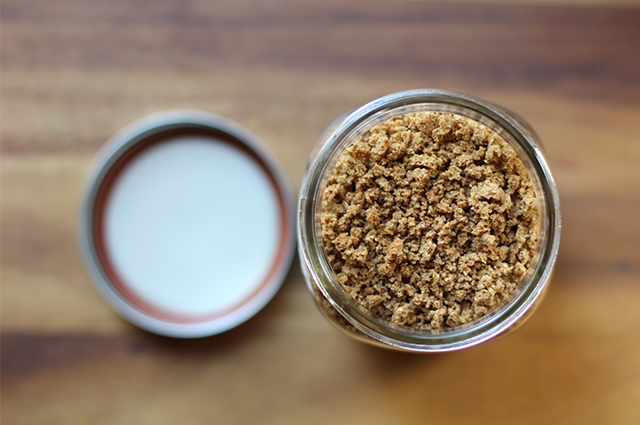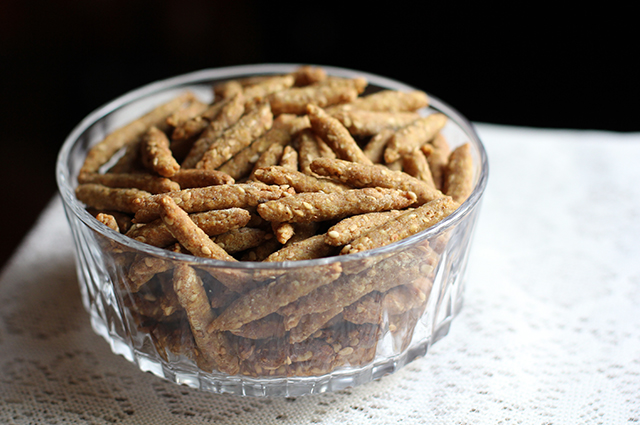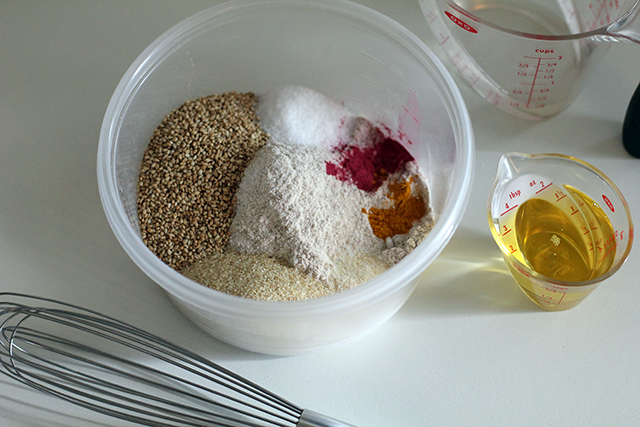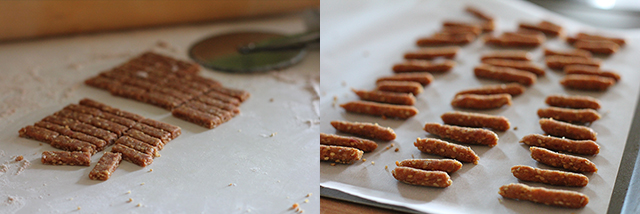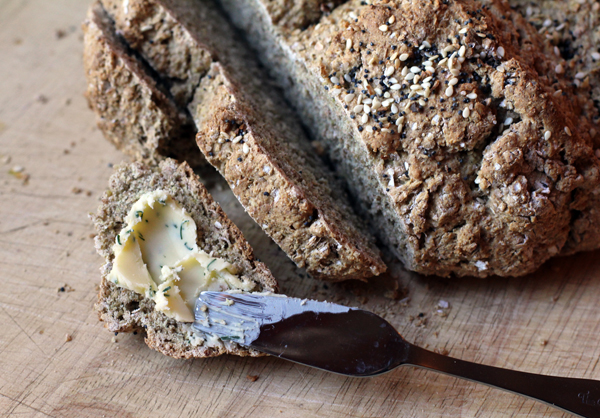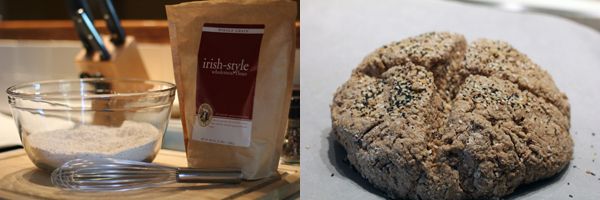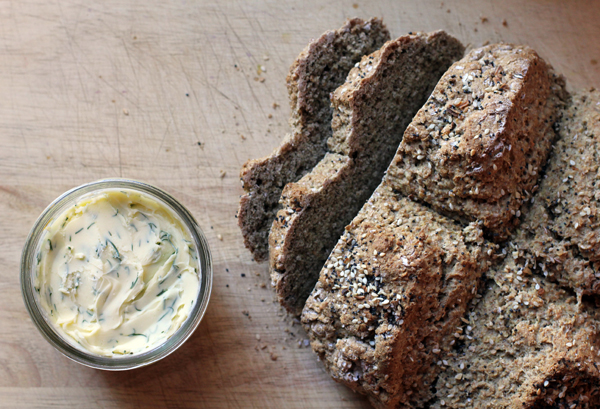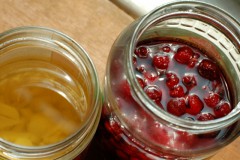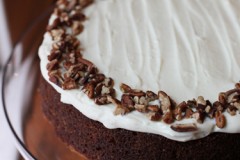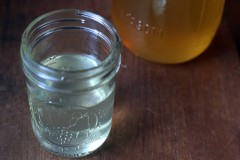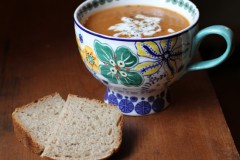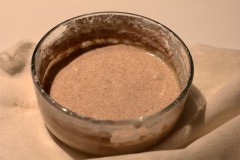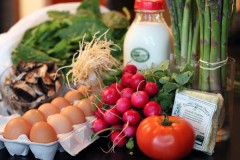Born and educated in Ohio as I was, drives made through the beautiful farmlands of nearby Amish communities or miles clocked behind their buggies on nearly empty country roads are scenes I associate with almost all the family car trips of my childhood. I fully acknowledge that it’s a lifestyle I’ve romanticized as a result, but I don’t see the harm if it leads to me watching interesting documentaries on PBS or picking up the occasional cookbook.
My recent nosing around is how I came to own Cooking from Quilt Country by Marcia Adams. It’s a volume packed with simple and hearty Amish cooking, but the first thing I really wanted to try out of the book was the recipe for what Adams referred to as Graham Nuts but most of us know as Post Grape-Nuts. Conveniently, the recipe called for two cups of buttermilk, an ingredient I had in excess after my last post.
When all was said and done, these cereal bits were tasty and characteristically molar-cracking. They were also very, very sweet and flavorful, thanks to the brown sugar, vanilla, and cinnamon. My husband dubbed them “Grape-Nuts meet Cinnamon Toast Crunch” to give you a sense of where things fell. The recipe even suggested serving the cereal with more brown sugar on top! This is awesome on the one hand—and if you are a hardworking farmhand, possibly totally acceptable—but it hardly makes for the kind of super healthy breakfast cereal I equate with the name. So I took to the internet, but found only recipes along a similar theme, some even adding butter and other oils and sweeteners. Not the direction I was looking to go.
For my version, I decided to reel things in. According to the ingredients listed on the commercial Grape-Nuts box, the cereal contained only whole grain wheat flour, malted barley flour, salt, and dried yeast, plus added vitamins and minerals. The taste was only very slightly sweet, but attractive due to its rich nutty flavor. That’s what I wanted to capture. I researched the differences between true graham flour (used in the original Amish recipe) and the varieties of whole wheat flour available on the market, and finally got a firm grasp on where wheat germ and wheat bran fit in on this product span. (If any readers sprout and/or simply mill their own flour, I’d love to hear how this recipe works for you.) I also considered alternative sweeteners that would deliver a less forward flavor punch and more of the slightly sweet malty flavor of the boxed cereal.
Knowing that if I put all my flavor eggs in the wheat basket I needed to make sure I picked a really flavorful starting flour, I decided to go with Hodgson Mill Old Fashioned Whole Wheat Flour, which is on the shelves at my local grocery store and offers a coarser graham flour grind. Depending on what’s available in your area, you could also use a more traditional whole wheat flour or supplement AP flour with appropriate proportions of wheat bran and wheat germ. I also had some barley malt syrup on hand from a recent bagel-making adventure, and discovered that this sweetened the cereal perfectly.
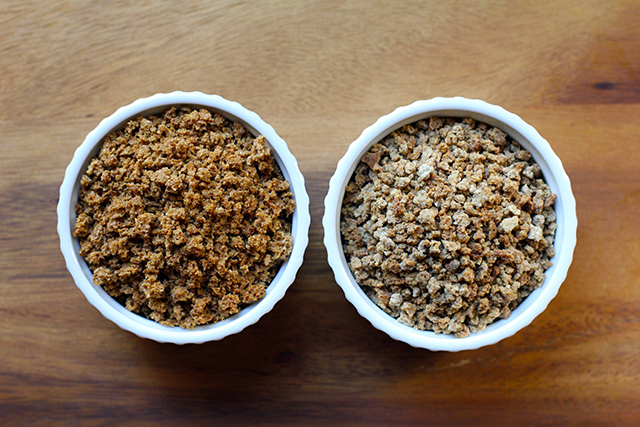
DIY Grape-Nuts (right) offer plenty of crunch, yet are slightly less dense and less uniform than the commercial option.
In terms of cost, I figure you’re looking at about $2.80 in raw ingredients for seven cups/19 ounces of homemade cereal vs. $3.49 for six cups/24 ounces of the commercial version. While there is nothing challenging about this recipe, it does require some babysitting. The texture of the DIY batch is plenty crunchy, yet slightly less dense and less uniform than the commercial option.
DIY Grape-Nuts Cereal
17.5 ounces (3 1/2 cups) graham or whole wheat flour
1 teaspoon salt
1 teaspoon baking soda
1 1/2 cups buttermilk
1/2 cup barley malt syrup (at room temperature for easier mixing)
Heat oven to 350°F. Oil a 12×16 sheet pan.
In a large mixing bowl, measure dry ingredients and whisk to combine. Add buttermilk and barley malt syrup to the bowl and mix just until all dry ingredients are evenly combined.
Scrape batter out onto the sheet pan and smooth out to the edges as evenly as possible. Bake for 20 minutes, until edges are just browning and puling away from the pan.
Loosen cake with a spatula and flip out on a cooling rack immediately. Set aside to cool about 40 minutes.
Once cooled, heat oven to 275°F. Working in four or five batches, roughly break up the cake into chunks by hand and then pulse in a food processor until the bits are the desired size.
Spread the bits across two 12×16 sheet pans and bake until completely dry (about 45 minutes), stirring the cereal and rotating the pans every 15 minutes.
Once dry, turn off the oven, crack the door, and leave to cool. Store in an air-tight container.
This recipe and post were created for my “DIY vs. Buy” column on Serious Eats.

